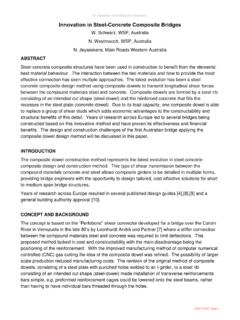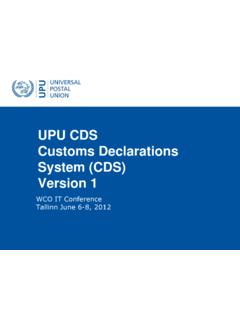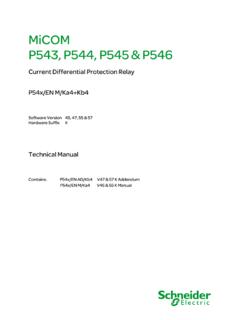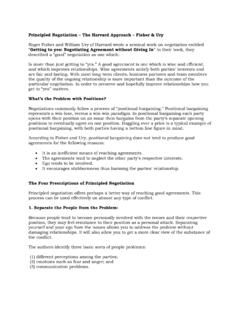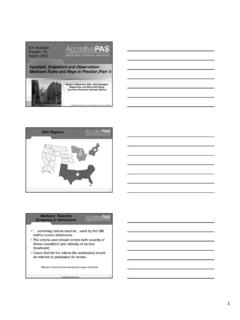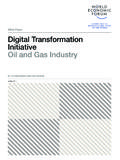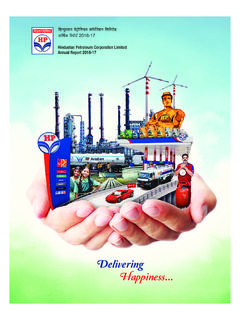Transcription of Reshaping the Future of Production - etouches
1 1 The 4th Industrial Revolution: Reshaping the Future of Production John Moavenzadeh Head of Mobility Industries, Member of the Management Committee World Economic Forum DHL Global Engineering & Manufacturing Summit October 7, 2015 Amsterdam 2 The Future of Production : A Caveat Voltaire: He who thinks himself wise, O Heavens! is a great fool. Nils Bohr: Prediction is very difficult, especially if it s about the Future . 3 Four Industrial Revolutions Have Transformed the Global Production System Cyber physical systems combine communications, IT, data and physical elements integrating a number of core technologies: Sensor networks (receptors) Internet communication infrastructure (IP) Intelligent real-time processing and event management (CPUs) Actors for mechanical activities Embedded Software for logic Big Data and Data Provisioning Automated operations and management of system activities Advanced Robotics 3D/4D Printing Source.
2 Accenture Systems are being transformed not specific products or services 4 Industry Transformation: The Digitization of Industries Creates Opportunities and Challenges The digitization of products, big data and cloud computing make it easier to understand and meet individual customer needs more accurately. We are at an inflection point: The rules from the industrial era of mass Production are giving way to a digital era of individualization and optimization. Could we see the end of economies of scale? Technology-driven transformation is giving rise to new questions and challenges that neither the public nor the private sector can tackle in isolation.
3 For example, Will technology-driven automation ultimately eliminate jobs and slow economic growth, or will the labor force evolve and ultimately catch up with technological change? What should be done to bridge the growing skill gap in the global workforce? What is the meaning of privacy and security in a world of greater transparency? How will we collaborate to build the regulatory frameworks and standards rapidly enough to fuel the growth and adoption of new technologies? 5 Business Models are Changing 88% of automotive strategy officers agree that by 2030 at least one major automaker will earn more revenue from selling data and mobility services than from selling cars and auto parts.
4 70% of professional services strategy officers agree that by 2025, digital solutions will generate more revenue for professional services firms than services delivered by people Survey of Industry Strategy Officers, September 2015 6 Technology is Transforming Business 50% of media, entertainment & information strategy officers agree that by 2025 90% of the news read by the general public will be generated by computers 100% of insurance and asset management strategy officers agree that by 2020 real time data streams from sensors will be core to insurer s competitive positioning 92% of banking and capital markets strategy officers agree that by 2030 distributed ledger technology will underpin much of our financial architecture 50% of institutional investor and sovereign fund strategy officers agree that by 2025.
5 The majority of financial transactions as well as management of important documents will take place on block chain architecture. Survey of Industry Strategy Officers, September 2015 7 Technology Can Address Resource Constraints 75% of chemistry and advanced materials strategy officers agree that by 2025 the primary feedstock for chemical Production will shift from oil & gas to biobased and recycled materials 100% of mining & metals strategy officers agree that by 2050 25% of annual mineral Production will come from new frontiers and unconventional operations (deep sea bed, seawater, deep solution mining and asteroids) 46% of oil & gas strategy officers agree that by 2025 there will be a global price for carbon emissions at a level that will significantly affect investment decisions in the oil & gas sector Survey of Industry Strategy Officers, September 2015 8 All of these Changes will Impact Global Value Chains 78% of supply chain & transport strategy officers agree that by 2025 the manufacturing output of developed countries will increase due to strategic onshoring/nearshoring decisions taken in response to changes in China s labour.
6 Land and energy costs 63% of consumer industries strategy officers agree that by 2030 at-home manufacturing will be mainstream in both developed and developing markets as consumers 3D/4D print a wide variety of products at home Survey of Industry Strategy Officers, September 2015 9 Factors of Production Land Labor Capital Know-How Energy Materials Trust Klaus Schwab: Talentism is the new capitalism. Manufacturing as a Percentage of GDP, 1970-2011, Selected Countries Source: United Nations Statistical Division. The World Bank, World DataBank, World Development Indicators. Does Manufacturing Matter? What is Moving up the Value Chain?
7 Source: World Economic Forum Global Agenda Council on the Future of Manufacturing Manufacturing as a Percentage of GDP, 1970-2011, Selected Countries The Smile Curve : One Way to Think About Value Flow Source: World Economic Forum Global Agenda Council on the Future of Manufacturing Generic Smile Curve in a Value Chain Manufacturing Upgrading the Value Chain Source: Adapted from Fernandez-Stark, K., Frederick S. and Gereffi G. The Apparel Global Value Chain: Economic Upgrading and Workforce Development. Durham, NC: Duke University Center on Globalization, Governance and Competitiveness, February 2011. Manufacturing Value Added (MVA) Growth Trend in World MVA: 1990-2013 at Constant 2005 US$ (1990=100) Source: UNIDO Statistical Database and UNIDO estimates, 1990-2013, Manufacturing World Manufactured Exports by Income Group, 2007-2012 (US$ billion and %) Source.
8 UNIDO Statistical Database on the basis of COMTRADE, 1997-2012, 1997 2007 2008 2009 2010 2011 2012 Average growth rate 2004-2008 (%) Average growth rate 2008-2012 (%) World 4,499 10,890 12,156 9,561 11,612 13,668 13,887 Industrialized economies 3,858 8,185 8,971 6,949 8,265 9,609 9,456 Industrializing economies 641 2,705 3,185 2,612 3,347 4,059 4,431 Manufacturing Drivers of Change in Manufacturing Source: Global Agenda Council on the Future of Manufacturing Manufacturing Factors of Convergence and Divergence between Manufacturing Stakeholders Source: Global Agenda Council on the Future of Manufacturing Manufacturing Issues Transforming the Industry Skills Mismatch Changes in technology and commerce challenge the development of skills and capabilities Complexity of Innovation Adapting to the increasing complexity of innovation Industrial Policy Using industrial policy to affect producers or consumers in line with socio-economic and political goals Infrastructure Gap The provision of infrastructure supporting manufacturing sectors Value Chain Shifts Value creation is shifting with technological.
9 Regulatory and market disruptions Socio-economic Changes Fostering manufacturing relies on consumption patterns, market conditions and societal inclusiveness Capital Intensity Increase in capital intensiveness as manufacturing moves towards further automation Environmental Responsibilities Environmental awareness drives sustainable innovation and Production 19 tax policy applied within simplified tax systems that promotes and protects free and fair trade policy promoting efficiency, security, strong infrastructure and low cost and workforce policies which develop superior talent , technology and innovation policies which promote advanced manufacturing Five specific policy areas where common messages emerged from executives around the world World Economic Forum Manufacturing for Growth Initiative 20 Sweden s Exports, 1995 21 Sweden s Exports, 2000 22 Sweden s Exports, 2010 Looking Toward the Future : The Digitization of Supply Chains 23 Projected shortfall of truck drivers in USA.
10 Turnover and unemployment 24 Source: The American Trucking Associations (ATA), WSJ SHORTFALL TURNOVER Labor Shortage in Shipping Industry reflects a Skills and Goals Gap Examples of SFFC* Medicines Trust and Visibility in Supply Chains is Critical 25 * SFFC = spurious, falsely-labeled, falsified, counterfeit Stakeholders Map Source: BASCAP. FIGHTING COUNTERFEITING AND PIRACY IN THE SUPPLY CHAIN (2015) Landscape of Supply Chain Practices: Creating triple advantage 26 Source: World Economic Forum; Accenture. Beyond Supply Chains 2015 27 Why Explore Responsible Value Chains Factory crash in Bangladesh Garment workers killed despite inspections/ supplier audits Incident caused brand damage and compensation payments to workers Unethical working conditions No control over manufacturers and their outsourcing policies.



